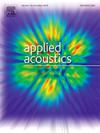Underwater acoustic classification using wavelet scattering transform and convolutional neural network with limited dataset
IF 3.4
2区 物理与天体物理
Q1 ACOUSTICS
引用次数: 0
Abstract
Underwater acoustic signal classification plays a pivotal role in maritime applications, requiring accurately identifying various acoustic sources in complex underwater environments. While deep learning has substantially enhanced performance in this domain, its success is often contingent on hand-crafted input features and intricate network architectures. The paper presents a novel method for classifying underwater acoustic signals by integrating the Wavelet Scattering Transform (WST) with Attention-augmented Convolutional Neural Networks (CNNs). The WST, based on wavelet analysis, effectively extracts multiscale features while retaining crucial time-frequency information, offering translation invariance and reducing the dependency on large training datasets. Furthermore, incorporating ResNet-18 with an attention mechanism improves extracted features by capturing richer semantic information, even from limited training data. The method was evaluated on the ShipsEar dataset, utilizing only 8.5% of samples for training, 1.5% for validation, and the remaining 90% for testing. Our approach achieved a classification accuracy of 0.93, surpassing the traditional Mel spectrogram with ResNet-18 by 9.8%. These results underscore the effectiveness of the proposed method in handling challenging underwater acoustic environments with limited training data.
求助全文
约1分钟内获得全文
求助全文
来源期刊

Applied Acoustics
物理-声学
CiteScore
7.40
自引率
11.80%
发文量
618
审稿时长
7.5 months
期刊介绍:
Since its launch in 1968, Applied Acoustics has been publishing high quality research papers providing state-of-the-art coverage of research findings for engineers and scientists involved in applications of acoustics in the widest sense.
Applied Acoustics looks not only at recent developments in the understanding of acoustics but also at ways of exploiting that understanding. The Journal aims to encourage the exchange of practical experience through publication and in so doing creates a fund of technological information that can be used for solving related problems. The presentation of information in graphical or tabular form is especially encouraged. If a report of a mathematical development is a necessary part of a paper it is important to ensure that it is there only as an integral part of a practical solution to a problem and is supported by data. Applied Acoustics encourages the exchange of practical experience in the following ways: • Complete Papers • Short Technical Notes • Review Articles; and thereby provides a wealth of technological information that can be used to solve related problems.
Manuscripts that address all fields of applications of acoustics ranging from medicine and NDT to the environment and buildings are welcome.
 求助内容:
求助内容: 应助结果提醒方式:
应助结果提醒方式:


